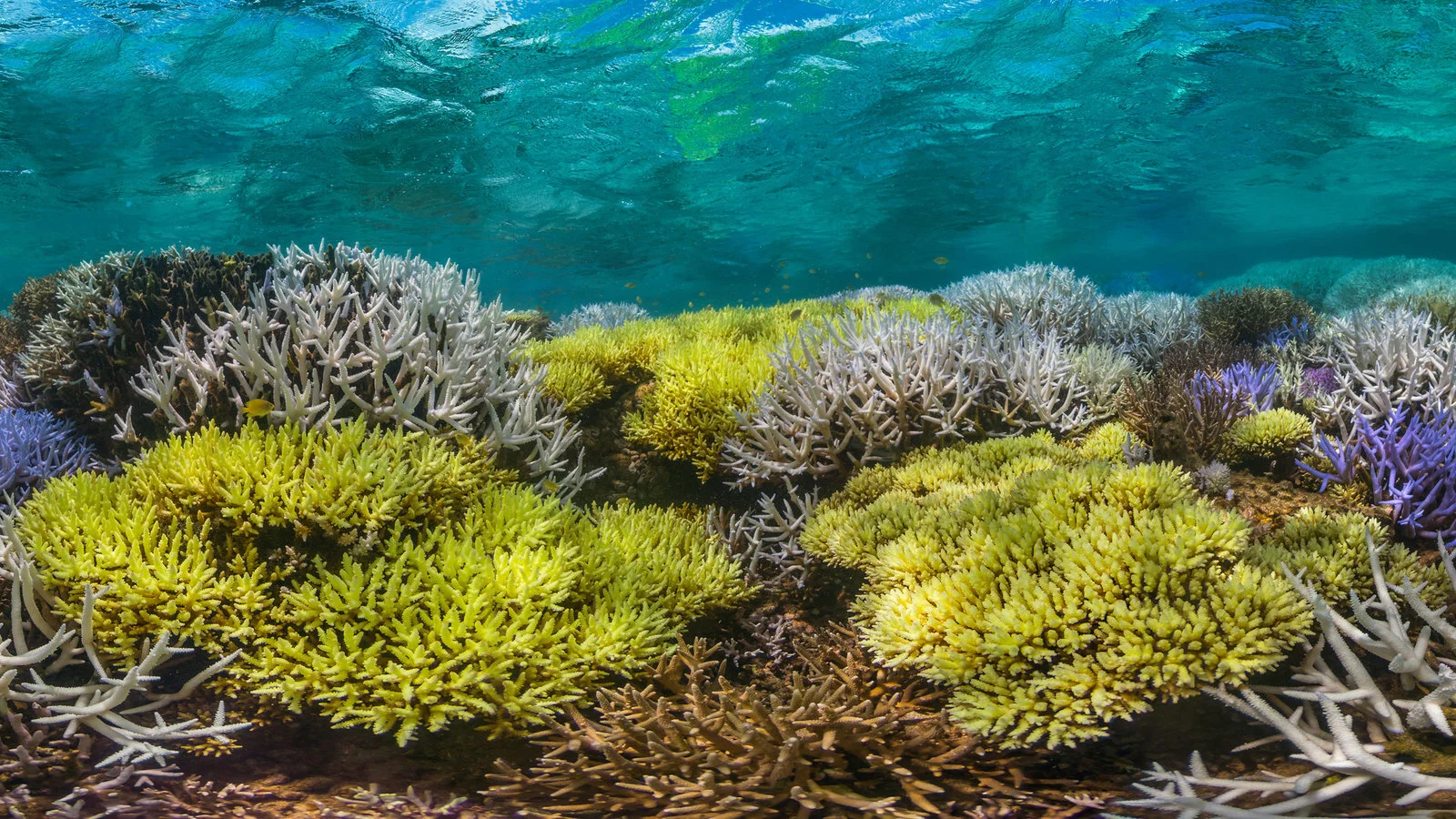The Destruction of Our Oceans: A Review of ‘Chasing Coral’
Photo from the film
Shannon O’Dwyer
The ocean is a vast and expansive place swarming with life and movement. But as the earth continues to rise in temperature caused by the carbon dioxide levels rising at an unprecedented rate, our oceans are reaching their boiling point. The heat is affecting everything that calls the ocean home, as it slowly begins to perish. The film Chasing Coral exhibits how climate change has affected the world’s coral population and how it is in need of constant attention. However, for many people, especially those who live inland of the U.S., the ocean is considered to be “out of sight, out of mind.” This destructive human behavior is why much of the world’s coral dies every year due to coral bleaching. Impactful films, such as Chasing Coral, are providing what society needs in order to light the fire of environmental change: visual proof.
What is Coral?
To understand the coral bleaching, you must understand coral as a species. As outlined in the film, corals consist of thousands of tube-like structures called ‘polyps.’ Each polyp has a mouth surrounded by a series of tentacles, which lead to the stomach of the polyp. These confined structures can combine and amount to millions within a single coral structure. Within the coral are millions of microscopic plants that photosynthesize; so while the coral is self-producing food, it is actually considered an animal. You may be wondering, why is this important? Each species of coral is different and beautiful and each is dependent on each other to build the ecosystem. Over 25% of fish and animal species depend on living corals for protection, food, and life as a whole. The National Oceanic and Atmospheric Administration states that corals protect coastlines from erosion and storms, and provide over half a billion people with food and protection. These reefs also bring in millions of dollars each year in tourism income as they become popular vacation attractions. Protection of the reefs is not just about protecting ocean life; it protects human life as well.
According to the film, coral bleaching occurs when the water temperature is raised by about 2 degrees celsius. This sends an alert to the coral, similar to the human body with a fever, causing the coral to bleach. While bleaching isn’t inherently dangerous for the coral, if it is unable to recover, it soon begins to fall apart and die. The bright white of the coral is the bone of the coral, soon to be covered by shreds of algae indicating that it has died. The Indian newspaper, Telangana Today claims that if all of the reefs disappeared, so will much of life on earth, beginning with thousands of species of fish and sea organisms that depend on the coral, then larger fish that rely on smaller fish as a food source, then millions of humans that rely on seafood as their food source. In the natural world, everything is connected. When you take away its foundation, a building is unable to stand; when you take away a chunk of our ecosystem, the planet crumbles.
The Film
The film follows cinematographer, Andrew Ackerman, partnering with marine scientist, Zackery Rago, and photographer Richard Vevers (along with other scientists and expert divers) as they record the world’s coral bleaching. As with anyone attempting to create an environmental documentary, their goal was to enlighten viewers on the severity of global warming effects on coral reefs. However, as with any environmental problem, people get lost in an ocean of statistics after statistics about the depletion of natural resources, or the loss of habitat, or the death of millions of corals; what some films fail to consider is that humans are visual learners. Where some have failed in providing a visual representation, Chasing Coral has succeeded in a shocking and ultimately saddening way.
Over the course of the film, a viewer is taken through months of scientific observation of the widespread coral bleaching event in 2016. Their plan was to capture the event through time lapse cameras planted at the reefs in Hawaii and a few other islands. However, after months of patiently waiting in hopes of capturing the event, the team would soon come to discover their videos were unusable due to a camera malfunction. Despite major setbacks, the team packed up and moved to the Great Barrier Reef in hopes of catching the bleaching event there. Once there, they discovered the only means of filming the coral would be to manually document each day at over 60 locations on the reef. Their work was taxing and extremely depressing as each day they witnessed a new coral die that was there the day before.
This visual proof does what many documentaries do not: puts the problems into perspective. Each and every location they filmed at bleached and died over the span of a month or two. Many environmentalists can create a documentary talking about the problems, but few can show you in real time. One of the most impactful aspects of the film is the connection between the researchers, their work, and the coral. Dr. Phil Dustin, a marine biologist, states that he can’t look at something he onced loved anymore with admiration: “I don’t see the beauty, I only see the problems.” To watch something new die in front of you every day would be extremely emotional, and as the viewer watches each day unfold, they begin to feel the severity of the bleaching. It is incredibly saddening to watch as it becomes tangible, the problems presented are not problems of future generations, they are problems of today. The film becomes an enlightening experience, and no longer appears as something that you can simply ignore.
The Impact
The year Chasing Coral was filmed (2016), 29% of the coral reef died. The film estimates that in 30 years, almost all of the coral populations will nearly disappear. That is unprecedented and nearly unbelievable how something can happen at that scale and go unnoticed by the general public. We can no longer sit idly by and watch as our coral populations die right before our eyes. Imagine traveling to Australia in hopes of diving along the Great Barrier Reef; the beautifully vibrant colors teeming with fish, sharks, sea turtles, stingrays, crabs, and anything you can imagine in surplus. Now imagine the reef is covered in a dark haize of algae, the rotting flesh of coral floating around you, not a fish in sight. That is the grim future of our reefs if we don’t address these problems right now. We can and must act.
One of the biggest takeaways from the film is that these widespread bleaching events can be avoided. We as a society do not have to let our coral landscapes turn barren if we actively fight climate change and keep ourselves updated on what we can do to help our oceans. A major contribution anyone can make is to make people around you aware of what is going on; spread awareness about coral bleaching, climate change, and our impact on our oceans. This can be as simple as watching the Chasing Coral and recommending it to your friends, family, and anyone who will listen. I cannot recommend this film enough and I will continue to advocate for the cause. I encourage you to do the same.






